|
Wetland and Aquatic Plants
of
Oklahoma
Interactive Keys: Emergent
Grasslike
Miscellaneous Grasslike Plants
A. Flowers with
spikes
1. Sweetflags (Acoraceae)
2. Cattails
(Typhaceae)
B. Flowers in spathes
1. Arum (Araceae)
C. Flowers in
dense, round clusters
1. Bur-reeds
(Sparganiaceae)
a. Flowers with two stigmas
b. Flowers with three stigmas
Flowers in spikes
Sweetflag
(Acoraceae)
Sweetflag (Acorus
calamus
L.)
Native perennial.
Click thumbnails to enlarge
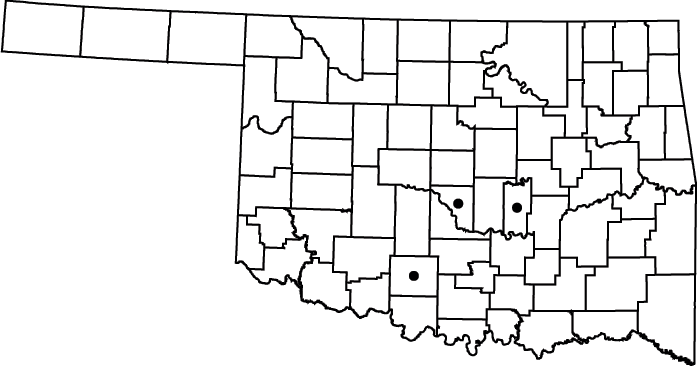
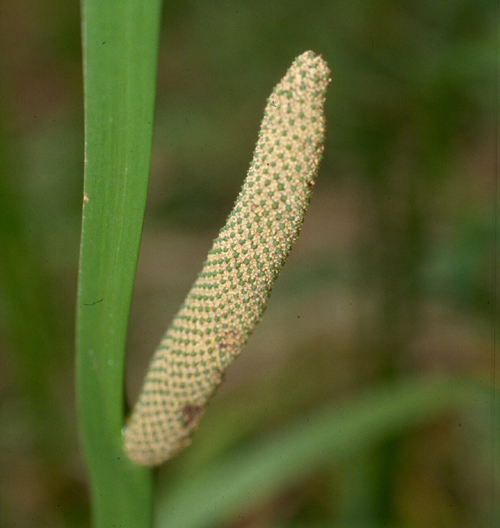
Notes: A key plant
in native
american ethnobotany and as such it distribution has been affected
byà. Some tribes used it to barter
with
others. Regarded by some tribes as a
medicianal panacea. For example, the
cheyenne used the plant to treat fever, headaches, as a diuretic,
laxative, and
in sweat lodge ceremonies.
NWI
status: OBL
Cattails (Typhaceae)
Note:
Cattails
hybridize readily, complicating
identifiaction. Cattails provide a
number of benefits to wildlife; dense growth provides shelter and
nesting
cover, the dense stems provide breeding areas for fishes, the rhizome
provides
food for geese, beavers and muskrats. The
cattail borer (Bellura spp.) lays its
eggs on cattails which
are protected by yellow, scaly covering. They
first feed on leaves, then bore into the stalk
with age. The hollow chamber thus created
is filled
with silk when the pupation begins. However,
the dense growth of cattails often makes
them undesirable
because they shade out other plant species.
Humans have also made extensive use of cattails. The rhizome and center of the stem can be
eaten raw or roasted. The rhizome can
be ground into flour after drying. The
rhizome was also believed to have medicinal properties.
The Cheyenne used cattail root extracts in
the treatment of abdominal cramps. The
Delaware used cattail roots to treat
kidney stones. The Potawatomie treat
inflammation. The Pawnee and Ponca used
the down to treat burns. Many tribes
used the down to prevent infant chafing. Leaves
and stems were used in weaving and
construction. The down was used to stuff
mattresses, etc.
Native Perennial
All
cattails have an NWI
designation of OBL.
Broadleaf
cattail (Typha
latifolia L.)
Native perennial.
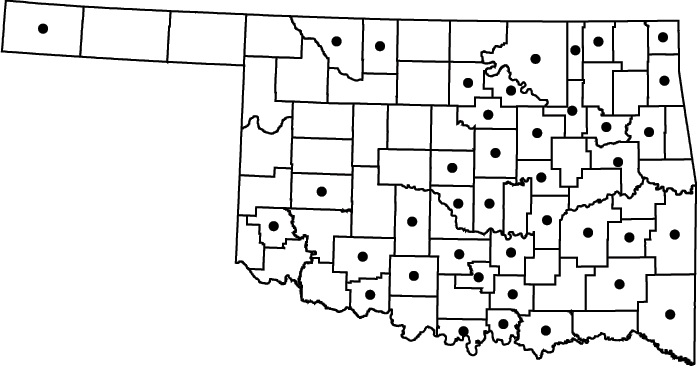
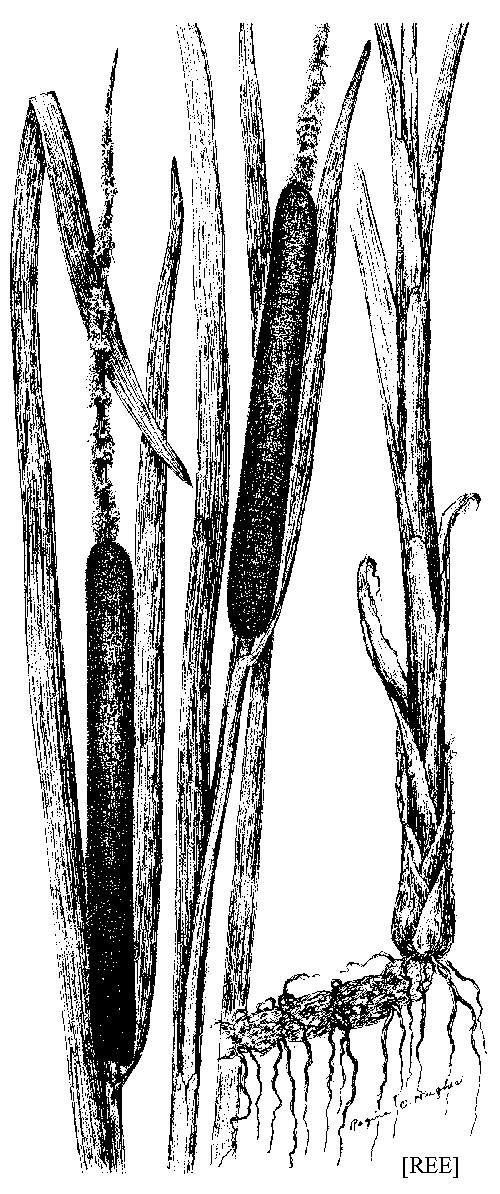
Note: There is no gap between the male and female
flowers.
Narrowleaf cattail (Typha
angustifolia L.)
Native perennial.
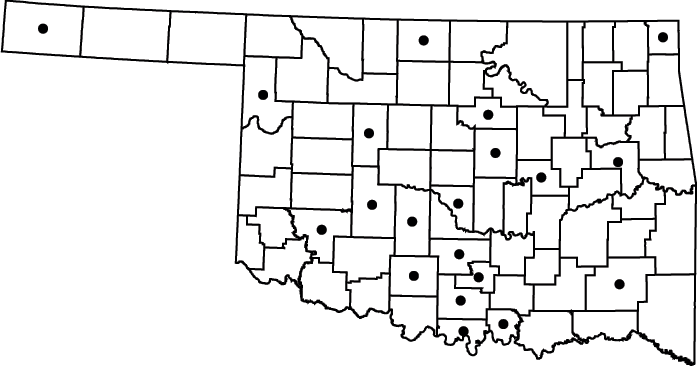
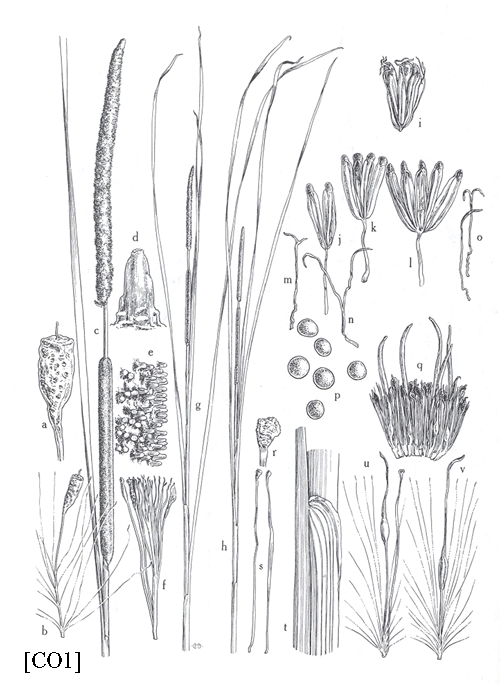
Note: A gap exists between the male and female
flowers. The leaf sheaths have a notch
at the top.
Southern cattail (Typha
domingensis Pers.)
Native perennial.
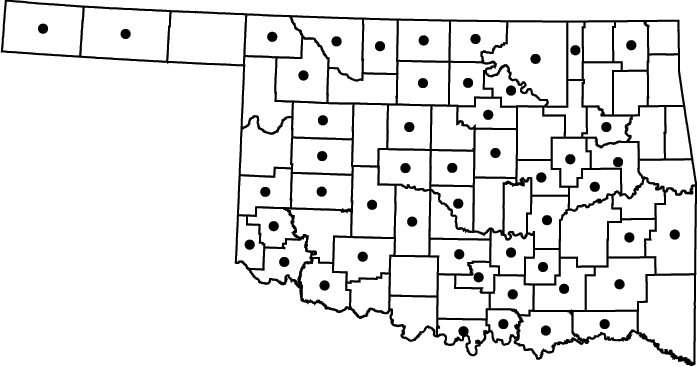

Note: A
gap exists between the male and female flowers. The
leaf sheaths are continuous with the blade.
Flowers in spathes
Arum (Araceae)
Arrow arum (Peltandra
virginica (L.) Schott)
Native
perennial.
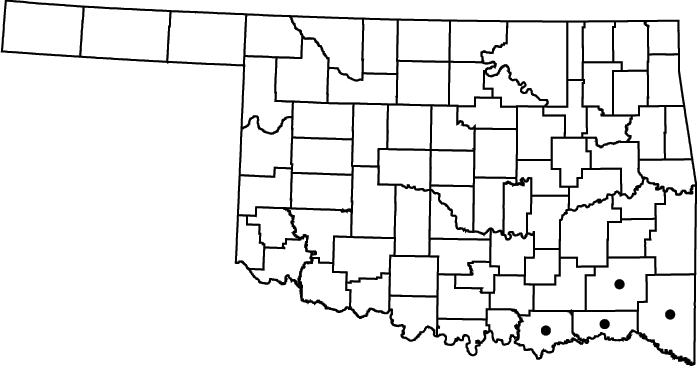
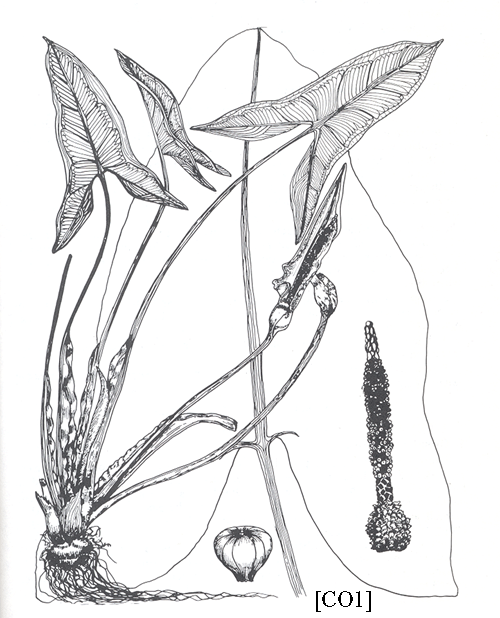
Note: A food plant for the Seminole.
NWI
status: OBL
Flowers
in dense, round, clusters
Bur-reed (Sparganiaceae)
Note: An important cover-forming plant for
wildlife species
in marshes. The achenes, or seeds, are
eaten by waterfowl and shorebirds. The
base of the plant provide fleshy food for beavers and muskrats.
All
bur-reeds have an NWI
designation of OBL.
Flowers with two stigmas
Broadfruit bur-reed (Sparganium
eurycarpum Engelm. ex Gray)
Native perennial.
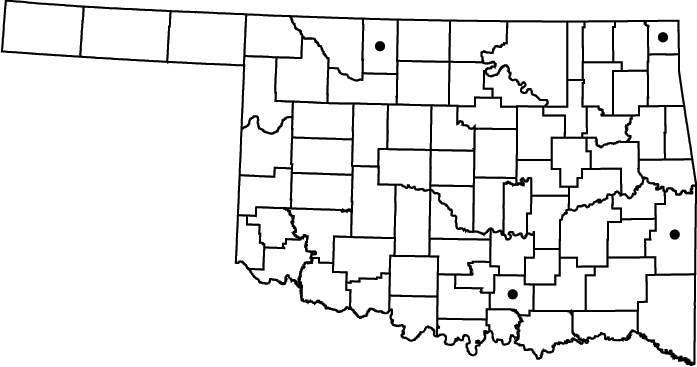
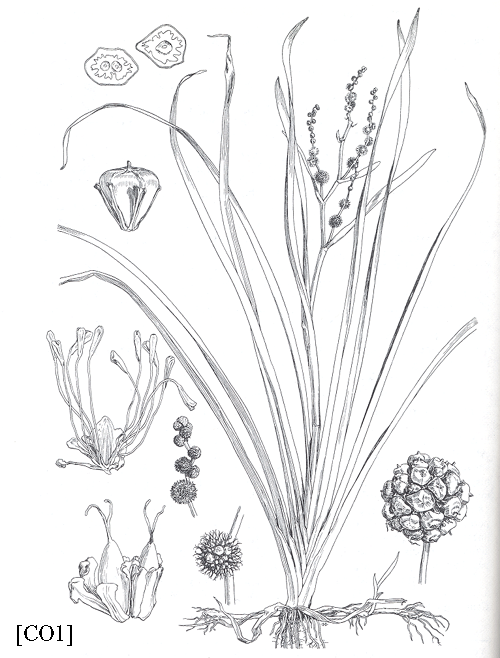
Flowers
with three stigmas
American bur-reed (Sparganium
americanum Nutt.)
Native perennial.
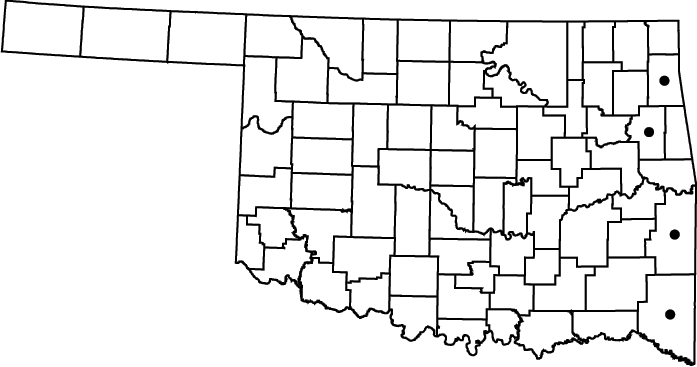
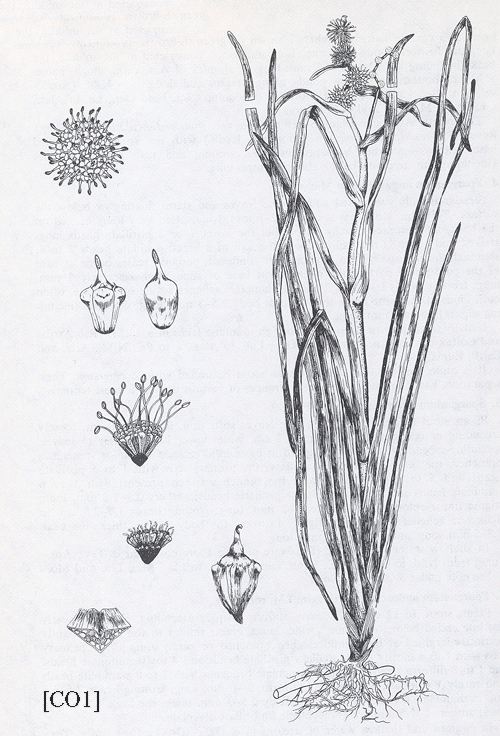
Note: Fruits are dark brown.
Branched bur-reed (Sparganium
androcladum (Engelm.) Morong)
Native perennial.
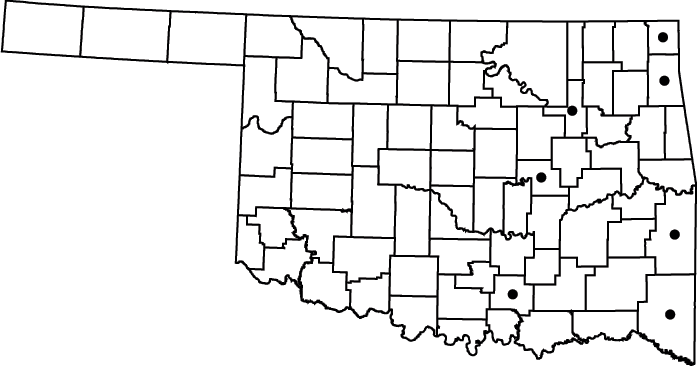
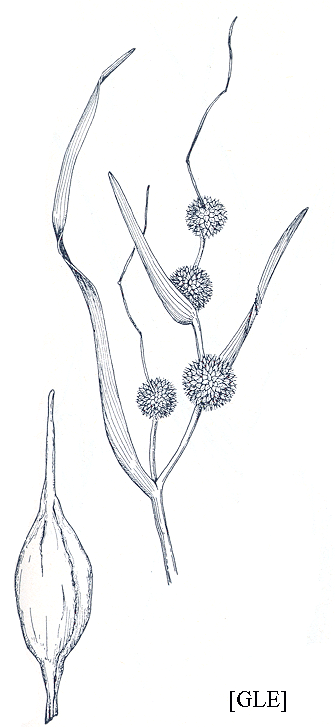
Note: Fruits are light brown.
Last update: 2/27/04
Comments to : Bruce Hoagland
bhoagland@ou.edu
Go to Oklahoma
Biological Survey Home Page
 Disclaimer Disclaimer
|

